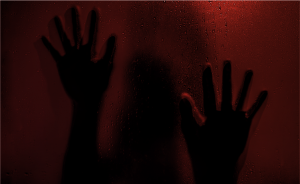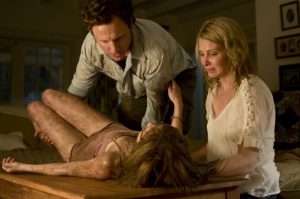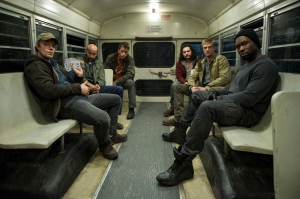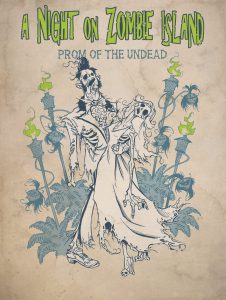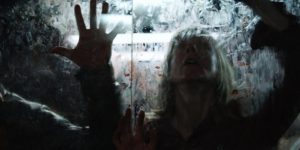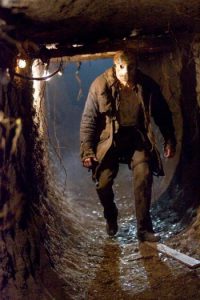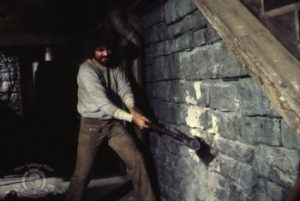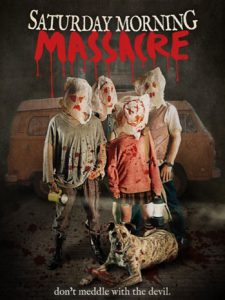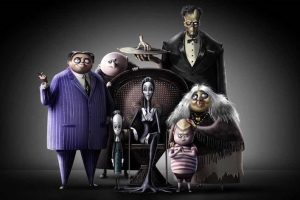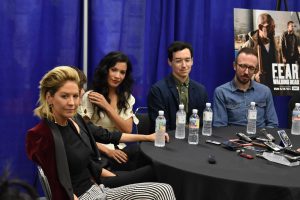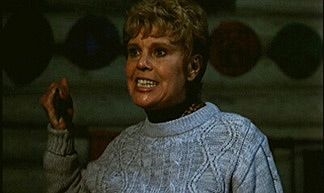
Violent Femmes: The Place of Women in Horror
 In a recent Top Ten, I referred to the late eighties/early nineties as the “Era of the Fatal Female.” Of course that was an off-the-cuff remark loosely based on findings from the research I had done for that article. Well after that, I started thinking about the role of women in horror films and I got curious. So I dived right back into the trenches to dig up more goods because that is what I love to do. What I found is that the role of women in film has changed a lot over the years, much like the role of women in life, and there is a common vein running through the decades.
In a recent Top Ten, I referred to the late eighties/early nineties as the “Era of the Fatal Female.” Of course that was an off-the-cuff remark loosely based on findings from the research I had done for that article. Well after that, I started thinking about the role of women in horror films and I got curious. So I dived right back into the trenches to dig up more goods because that is what I love to do. What I found is that the role of women in film has changed a lot over the years, much like the role of women in life, and there is a common vein running through the decades.
Of course we are all familiar with the Damsel in Distress. This is the classic female role. We of the weaker sex are, it seems, always in need of rescue…at least we are if you go by the women of older horror films. The monster grabs us, totes us off into the night and we are trapped (looking sexy and disheveled) until the Hero comes to our rescue. I always wondered what the monster would do if the good guy never showed up. But we never get to find out because he always shows. Good thing for us ladies. The final girl was a concept that had not occurred to film makers at that time so we relied on our handsome hero to save the day.
Moving on to the meat of the issue, this is what I uncovered. Women in the early part of the century were rarely the evil doers. When we were, it was always because of passion, anger or jealousy. Someone came in and stole our man, tried to steal our man or implemented a myriad of other ways to tick us off to the point of murder. The acclaimed 1942 film Cat People is the perfect example of those triggers in motion. Others are Captive Wild Woman (1943) and Jungle Woman (1944). This last one even sported the tagline “Flesh of Beauty…Soul of Satan.” This trend continued on into the sixties with titles like Black Sunday (1960, Mario Bava), Blood and Roses (1960) and Frankenstein Created Woman (1967). Women were victims unless their emotions got the best of them, consequently driving them to murderous mayhem.
The seventies gave us a whole new breed of film. In the late 1960s, a new weapon hit the scene. The Pill was introduced and women never looked back. For the horror crowd it was “The Sexual Revolution Meets Exploitation Cinema.” Now that sexual freedom was something a woman could sink her teeth into, so were meatier, sexier, evil..er roles in horror films which had grown in number as well. A great deal of these movies were vampiric in nature. I think you will see the obvious connection there. In this new era, women were now the force with which to be reckoned. We became the seducers, the murderesses and the ones in control. A banner year for killer chicks, 1971 hit with titles such as Countess Dracula, The Devil’s Nightmare, Dr Jekyll and Sister Hyde, Daughters of Darkness, Lust for a Vampire, and She Killed in Ecstasy. And of course I cannot fail to mention Carrie (1976) as one of the most horrific revenge films of the time. She was surely pissed and everyone had to pay. Then came Alice, Sweet Alice (1977) to once again put a woman in the driver’s seat of evil.
Did I mention revenge films? Why yes I did. Let’s talk about those. As I have stated earlier, women of the past had only been spurred to kill when their emotions took control. But by the late seventies, those motives had altered slightly. Still known as the “emotional ones” women, it seemed, needed a reason to go off their nut. While men have been wandering around, needlessly hacking people for decades, a female serial killer would never be considered marketable. Who would believe that someone so fragile and frail could possibly pull off cold-blooded murder. In answer to that, we get revenge. In these cases the woman becomes the one wielding the weapons but in response to something that has been done to her…usually rape. While every horror fan has at least heard of I Spit on Your Grave (1978), the first rape revenge film was likely Lisa, Lisa from the year before. These are women who struck back in any way they could, mostly horrific, as a lesson to those men out there who think their actions have no consequences. Cronenberg’s Rabid (1977) once again pitted sex and violence against males as the famed porn star Marilyn Chambers broke into the mainstream with a need to feed. How confusing must that have been for horny teenage boys everywhere?
Friday the 13th started the eighties off with a slash when Mrs. Voorhees came on the scene to avenge the untimely death of her son, Jason, the poor swimmer. Notice that again, even though she was the destructor, it was based on emotion. We still have not reached the point where women kill just to kill. For some reason it is unacceptable that a woman could just go off her rocker, slash a few people into streamers, then go about her business. Even in films like The Hunger (1983), The Kiss (1988)and The Guardian (1990)there are underlying causes for the killings. In those cases it’s a need either to feed or continue living. Still no motiveless women here. One great example comes to mind in the thriller Basic Instinct (1992). Sharon Stone’s character possesses many of the necessary serial killer traits. She is brilliant and she is seemingly cold and heartless with no remorse for her actions. But that isn’t a horror film so I’m back where I started.
This topic cannot cross my mind without bringing up one of my favorite femmes. May (2002) starring Angela Bettis as the titular troubled chick is disturbing and gory. But even she is suffering from severe emotional problems. May is not evil. She is lonely. She has difficulty making friends the usual way so she gets creative proving once again that emotional troubles are the most believable motive for women.
The more recent and less than stellar American Psycho II puts the adorable Mila Kunis at the other end of the knife but that is even explained away in the beginning as a side effect of her having witnessed Patrick Bateman in all his gory glory.
So this is the question. Why are female killers for the sake of killing so hard to come by in a horror film? It appears that Hollywood takes its cues from real life on this one. For those of you not up on your serial killer statistics, males prevail in this category by a wide berth, making up at least ninety percent of the roster. Still, anyone who watches Snapped knows full well that a woman can be deadly. The female killer typically falls into either the category of Black Widow, mating and killing to gain wealth, or Angel of Death. Think Kathy Bates in Misery. Chopping up bodies and hiding them in the basement is not a habit you will likely find among these offenders. The times when you do, they are usually partnered with a male.
This trait is even more rare in films. Fiendish women don’t don masks or lay traps as a rule. They openly seduce their victims and deal death when they are least expecting it, usually when the victim’s brain is otherwise occupied or suffering from misdirected blood flow…ahem. Note that even in one of the most popular slasher series, Friday the 13th, Mrs. Voorhees was replaced in the second film with her son, Jason, who went on to become an icon within the genre. Most non horror fans have no idea that he wasn’t the killer in the beginning. That fact was glossed over and pushed under the rug to make way for the masked madman we all know and love.
But if this is the reason is it a good enough reason? We are all aware that reality and horror don’t always mix. That never seems to be an issue. So is it perhaps that people find female killers less frightening or threatening. Or is it simple marketing? If you have a woman slinging the ax, you have to at least make her attractive. Is it that no one wishes to see a woman in this light or is it simply not believable? Or is it just that a hockey mask can be Hell on the hair?



